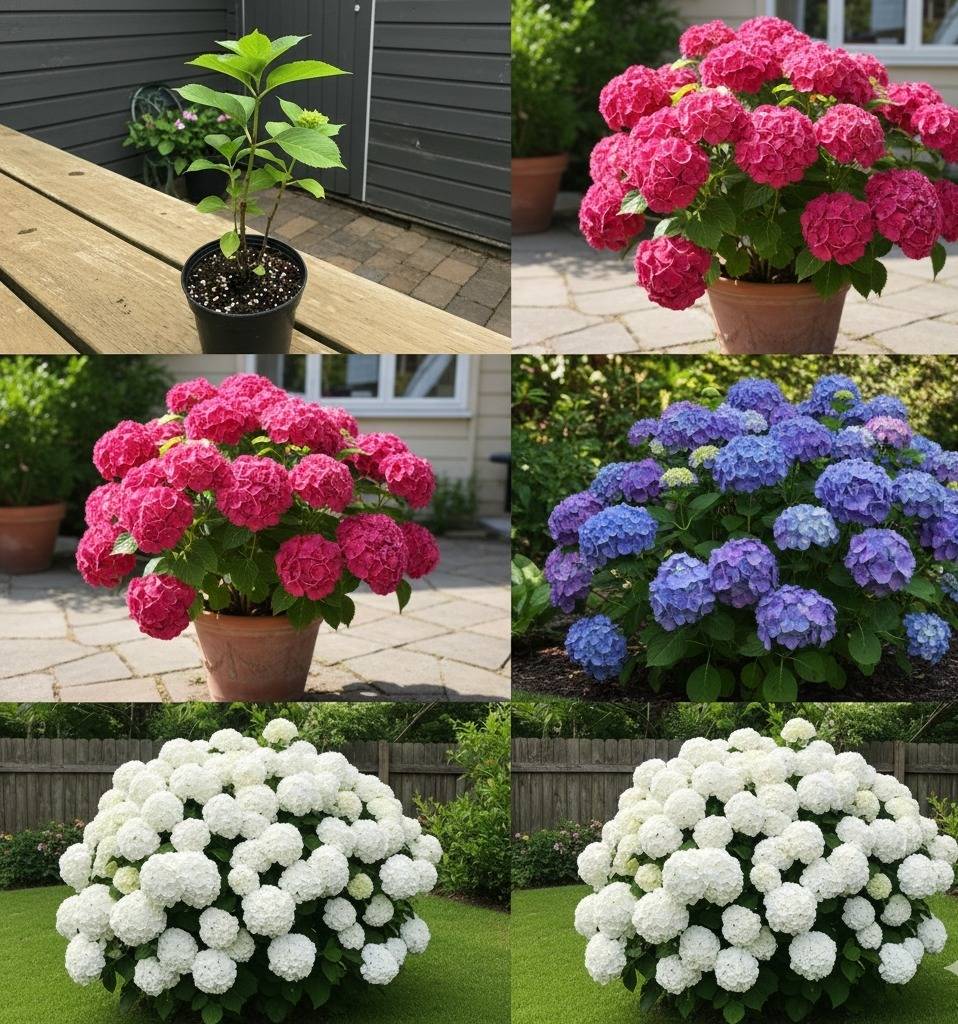Mulch with 2–3 inches of bark, compost, or leaf mold around the base of the plant (but not touching the stem) to:
Conserve moisture
Regulate soil temperature
Suppress weeds
Fertilizing for Growth and Blooms
Hydrangeas don’t need heavy feeding, but a little boost can encourage lush foliage and large blooms.
Use a balanced slow-release fertilizer in early spring.
For bigleaf types, avoid high-nitrogen fertilizers, which promote leaves at the expense of flowers.
A second light feeding in early summer can support continuous blooming.
Adjusting soil pH can also influence flower color in bigleaf hydrangeas:
Acidic soil (pH below 6) = blue flowers
Neutral to alkaline soil (pH 6.5–7+) = pink flowers
Add garden lime to raise pH or sulfur to lower it, depending on your desired bloom color.
Pruning Tips
Proper pruning depends on the type of hydrangea:
Bigleaf and oakleaf hydrangeas bloom on old wood. Prune after flowering in summer to shape and remove spent blooms.
Panicle and smooth hydrangeas bloom on new wood. Prune in late winter or early spring to encourage fresh growth and larger blooms.
Remove any dead or weak stems at the base to improve airflow and reduce disease risk.
Avoid heavy pruning if you’re unsure of the variety—over-pruning can lead to fewer or no blooms.
Protection from Weather and Pests
Most hydrangeas are hardy, but late frosts can damage early growth. Cover new growth in early spring if frost is expected.
Watch for pests like:
Aphids
Spider mites
Slugs and snails
Treat infestations with insecticidal soap or natural predators like ladybugs. Diseases like powdery mildew and leaf spot can occur in humid conditions; ensure good airflow and avoid overhead watering.
continue next page
ADVERTISEMENT

